Featured Panoramic Photo Above:
Classic Charles Conlon photo of Ty Cobb sliding into Jimmy Austin
Baseball History Comes Alive Now Ranked As a Top Five Website by Feedspot Among All Baseball History Websites and Blogs!
(Check out Feedspot's list of the Top 35 Baseball History websites and blogs)

Guest Submissions from Our Readers Always Welcome! Click for details
Subscribe to Baseball History Comes Alive! for automatic updates (sign-up block found in right side-bar)
As a Free Bonus for subscribing, you’ll get instant access to my two Special Reports: Memorable World Series Moments and Gary’s Handy Dandy World Series Reference Guide!
Josh Gibson Photo Gallery
Click on any image below to see photos in full size and to start Photo Gallery:
We’re Contacted by Descendant of Josh Gibson
Today we feature something special for all our readers. I recently had a lengthy phone conversation with Pittsburgh resident Sean Gibson, the great-grandson of Josh Gibson. Sean is also the Executive Director of the Josh Gibson Foundation.
As I’ve said many times, we always love it when we’re contacted by descendants of former players. It doesn’t matter if the player was a star or a sub. But when the player was a superstar Hall-of-Famer, that makes it even more exciting.
That Josh Gibson is one of the greatest sluggers in history is hardly in dispute. Often mentioned among baseball’s immortals, his life was tragically cut short at the age of 35 in 1947, shortly before Jackie Robinson broke baseball’s color barrier.
The stories of Josh Gibson’s mammoth home runs have become the stuff of legend. One unverified account said he once hit a towering blast at Yankee Stadium that traveled about 580 feet. Another said that he hit the only fair ball ever to completely leave Yankee Stadium. Washington Senators owner Clark Griffith once said: “He hit more home runs into Griffith Stadium’s distant left-field bleachers than the entire American League.”
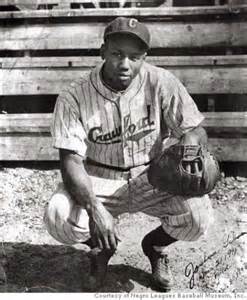
In various publications, the 12-time Negro League All-Star has been credited with as many as 84 homers in one season. His Hall of Fame plaque states he hit “almost 800 homers in his 17-year career.” Gibson’s lifetime batting average against all competition was higher than .350, with one reference putting it at .384. In recorded at-bats against major league pitching, Josh hit .426. He won nine home run titles and four batting championships. In 2000, the Sporting News ranked him 18th on their list of the 100 Greatest Baseball Players.
I started our conversation by asking Sean what it’s like being related to a legend like Josh Gibson. “It’s great, great for our family. The city of Pittsburgh has always welcomed the Gibson family. We have many descendants in the area.”
There are many reasons for this warm embrace. Although he was born in Buena Vista, Georgia, Josh’s family moved to Pittsburgh when he was 12 and he spent his formative years there. In addition, Josh had many of his best seasons in Pittsburgh, playing for the two great Pittsburgh Negro League teams: the Homestead Grays and the Pittsburgh Crawfords. There’s now a Josh Gibson street, plus baseball fields and schools named in his honor. As Josh Gibson’s direct descendant, Sean is in high demand for speaking engagements and appearances throughout the Pittsburgh area.
Sean traced his relationship back to Josh Gibson. He explained that Josh Gibson was known in his family as “Josh Senior.” He was the father of twins, a son and a daughter. The son was also named Josh and was known as “Josh Junior,” or just as “Junior.” He is Sean’s grandfather. Tragically, Josh Senior’s wife Helen died during the childbirth of the twins. Josh was emotionally devastated over her death and some who knew him said he never fully recovered. Josh Junior’s daughter, who retained the Gibson family name, is Sean’s mother.
Josh Gibson also had a younger brother, Jerry, who played for the Cincinnati Tigers, and a sister, Annie (Gibson) Mahaffey, who lived into her nineties. As Josh’s surviving sibling, Annie had possession of most of the Josh Gibson memorabilia. About ten years ago, Annie’s daughter, Lois Gibson Cater gave Sean one of Josh’s MVP trophies from his time in the Puerto Rican Leagues.
Josh Junior also played in the Negro Leagues as a third baseman for the Homestead Grays in 1949 and 1950. Junior actually started out in baseball as the batboy for the Pittsburgh Crawfords. Teammate Sam Bankhead took young Junior under his wing and served as a mentor and positive male role model.
Sean has many fond memories of his time spent with his grandfather, Junior Gibson. As the son of Josh Gibson, Junior was asked to attend many Negro League conventions and reunions in the 1990s. He also accepted many posthumous awards on behalf of his father. Sean, in his twenties at the time, served as Junior’s driver to many of these functions. This was always a thrill for Sean, giving him the opportunity to actually meet and chat with greats of the Negro Leagues who had been former teammates and/or opponents of Josh Gibson. Sean agreed with a sentiment I’ve picked up over the years: In spite of the hardships they endured, many veterans were quick to express their love for the Negro Leagues. A recurring theme was that their cherished memories from the Negro Leagues would stay with them forever.
Sean also recalled the enormous respect Josh Gibson garnered from his Negro League contemporaries. They were unanimous in their opinion of Josh as “the greatest player in Negro League history.” Cool Papa Bell once said of him: “He was a hitter, one of the greatest you ever saw.” Sean frequently heard Josh described as “a great guy, a decent guy,” “funny,” and “a real jokester.”
Josh Gibson’s baseball ability was also well known to his major league contemporaries, sadly summed up by this quote from Walter Johnson:
“There is a catcher that any big league club would like to buy for $200,000. His name is Gibson. He can do everything. He hits the ball a mile. He catches so easy he might as well be in a rocking chair. Throws like a rifle. Too bad this Gibson is a colored fellow.”
Sean related one funny story from his meeting with Double-Duty Radcliffe. Casting a look at Sean, he said, “Sean, you look just like your great-grandfather.” Sean had never heard this before and believes what caught Double-Duty’s eye was Sean’s 6’2” muscular build, similar to Josh Gibson.
I had a few more questions for Sean and read to him this quote from Hall-of Famer Larry Doby, asking for his reaction:
“One of the things that was disappointing and disheartening to a lot of the black players at the time was that Jackie – although a great player – was not the best player. The best was Josh Gibson.”
Sean agreed with the sentiment, and elaborated on his thoughts about Jackie Robinson:
“Josh Gibson may have been the greatest player, but Jackie was the right one for the time. What if Jackie had failed? You know what the response would have been? ‘We told you so.’ Who knows how long the doors would have been closed?”
Did the Negro League players regret not playing in the major leagues?
“Sure they would have liked to play in the majors, but they knew it wasn’t going to happen. Society made that decision for them, so they just moved on with their lives. They knew how good they were, they didn’t have to prove anything to anybody. Josh had his troubles, but he had a pretty good life. He was making good money, which included ‘gate money.’ Like Satchel Paige, people paid to see the great ones play, and so they were given a piece of the gate.”
Did Josh die of a broken heart because he was denied entry to the major leagues?
“I don’t think that’s accurate and neither did Josh’s son, Junior who once said: ‘When I hear that stuff about how my father died of a broken heart that upsets me. Cause that wasn’t my father. He was the last guy to brood about something he could do nothing about.’ “
Was he as good as Babe Ruth?
“That’s impossible to tell. He was a great ballplayer, not just a Negro League player. You can’t tell who was the greatest ever because Josh never played against white players, and Babe never played against black players. They were both great players.”
Sean commented numerous times about the debt owed to Rube Foster, the inspiration behind the founding of the Negro Leagues: “Without him there may not have been a Josh Gibson. There may not have been a Jackie Robinson. He definitely doesn’t get enough credit.” Sean also mentioned the enormous debt of gratitude the Negro Leagues owed to Ted Williams, who used his 1966 Hall-of-Fame induction speech to advocate for opening the hallowed doors to the stars of the Negro Leagues. In 1972, Josh and Buck Leonard were inducted into the National Baseball Hall of Fame, following behind the first Negro League inductee, Satchel Paige.
Sean also recalled one special moment from his youth when he first realized he was related to someone very important:
“When I was about 12-13 years old, in 8th grade, a friend took out a book from the library on Josh Gibson. I saw the book, asked if I could borrow it, and took it home to read it. Prior to this I had heard family conversations about Josh Gibson, but really didn’t give it a lot of thought. But now I actually saw a book about him. Something snapped in my brain. From that moment on I wanted to learn as much as possible about Josh Gibson, and I’ve never stopped. It was truly an awakening moment.”
The Gibson athletic ability has been passed down to Sean and he played sports in high school and at the college level. Surprisingly, baseball was not his top sport. He was more interested in basketball and football. He attended Langley high school in Pittsburgh and later attended Edinburgh University of Pennsylvania on scholarship and graduated with a degree in criminal justice.
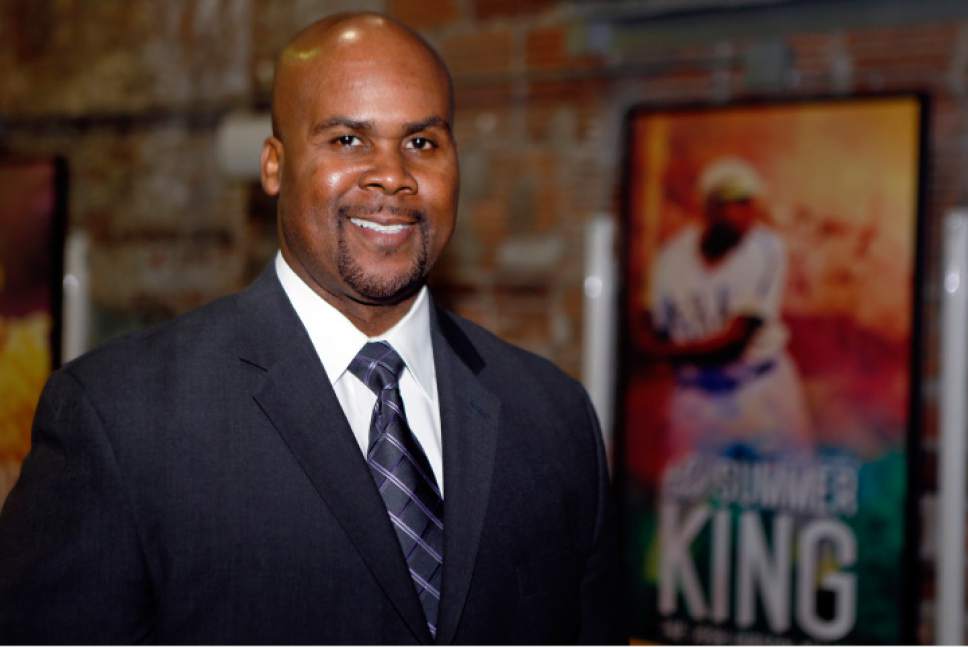
Sean is now the Executive Director of the Josh Gibson Foundation, founded by his grandfather, Junior Gibson, in 1998-99. In addition to the great work the Foundation does for the Pittsburgh community, including summer camps, mentoring programs, and, as Sean put it, “keeping kids off the streets,” one of its primary goals is to keep the legacy of Josh Gibson alive for a new generation of baseball fans. Due to the success of the foundation, Sean agrees that many more people are aware of Josh Gibson today than they were 20-40 years ago.
How good was Josh Gibson? It’s hard for us who never saw him play to judge; but as we close, let these quotes from those who did see him play sink in:
“I played with Willie Mays and against Hank Aaron. They were tremendous players, but they were no Josh Gibson.” – HOFer Monte Irvin
“He was superhuman, the greatest player who ever lived, there’ll never be another like him in a thousand years.” – HOFer Satchel Paige
“Josh was a better power hitter than Babe Ruth, Ted Williams, or anybody else I’ve ever seen. Anything he touched was hit hard. Shortstops would move to left field when Josh came to the plate.” -Negro League pitcher and manager, Alonzo Boone
I’m very grateful to Sean Gibson for generously sharing his time with me as we celebrate the life and career of his great grandfather, Hall-of-Famer, Josh Gibson. I’m sure his information will serve as a source of enjoyment and inspiration to our readers, many of whom are avid students of baseball history.
Please take a moment to visit the Josh Gibson Foundation
Gary Livacari
Photo Credits: All from Google search
Information: Phone conversation with Sean Gibson; Excerpts edited from Josh GIbson Wikipedia page; SABR biography of Josh Gibson by Bill Johnson
Check out my latest book, recently nominated for the SABR 2020 Lawrence Ritter award: Reflections On the 1919 Black Sox: Time to Take Another Look now available on Amazon in e-book and paperback. All profits go to the Illinois Veterans Foundation
Add your name to the petition to help get Gil Hodges elected to the Hall of Fame
Vote In Our New Poll: Baseball and the Coronavirus – What Constitutes a Legitimate Season?
We are a participant in the Amazon Services LLC Associates Program, an affiliate advertising program designed to provide a means for us to earn fees by linking to Amazon.com and affiliated sites. Click here to view Amazon’s privacy policy

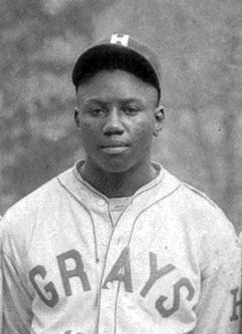
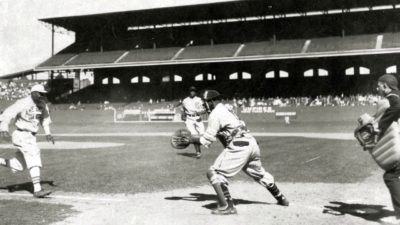
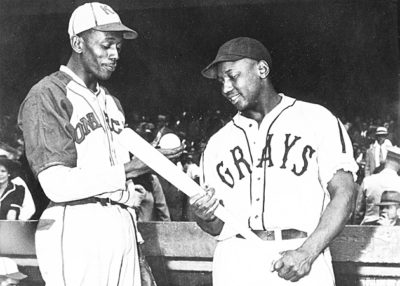
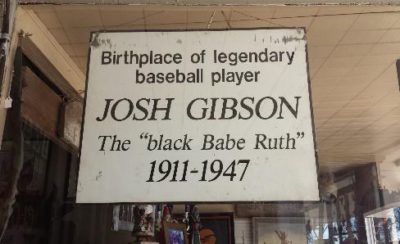
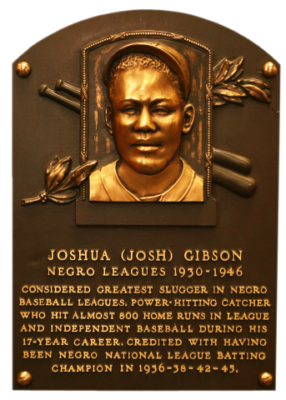
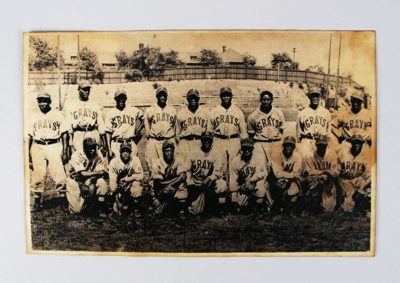
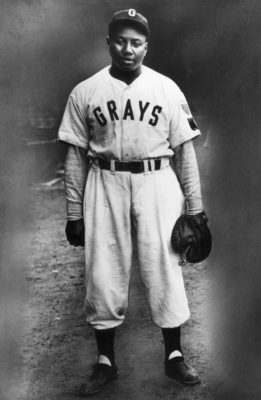
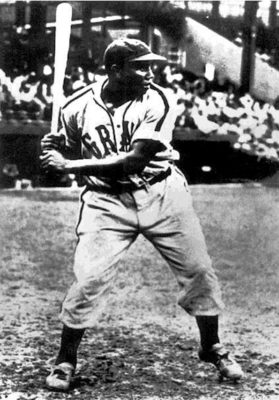
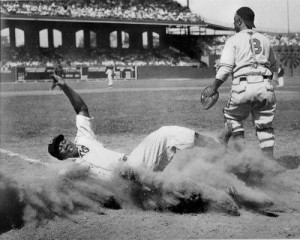
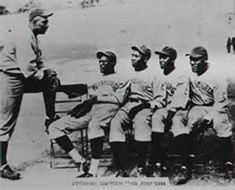
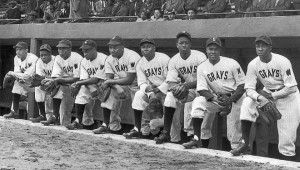
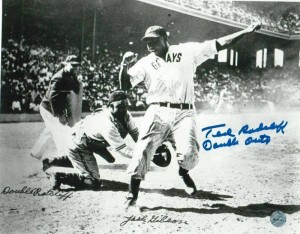
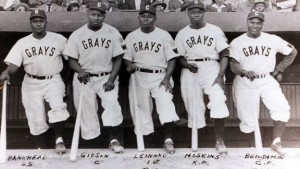
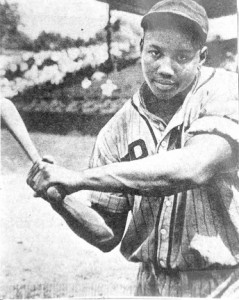
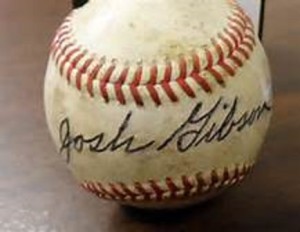
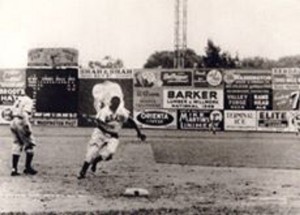
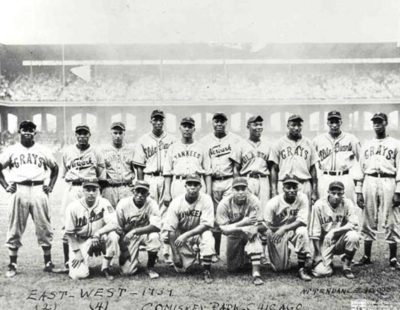
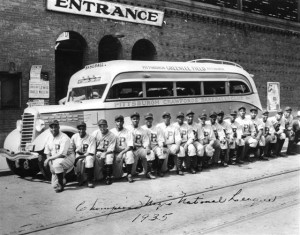
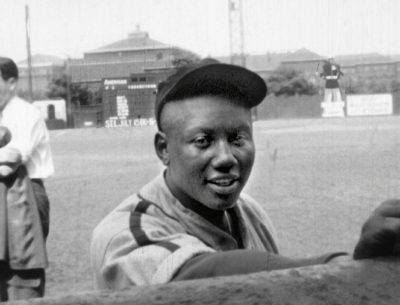
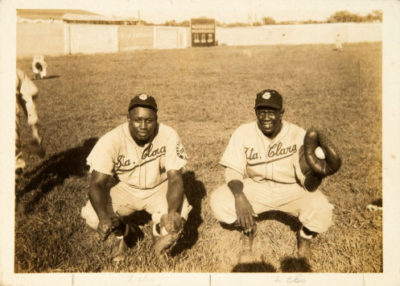
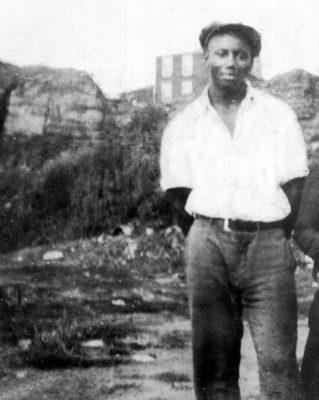
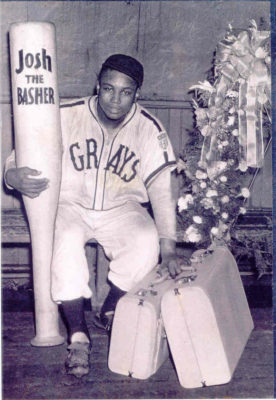
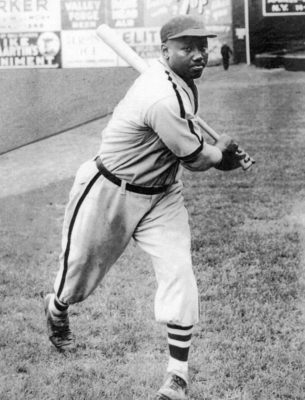
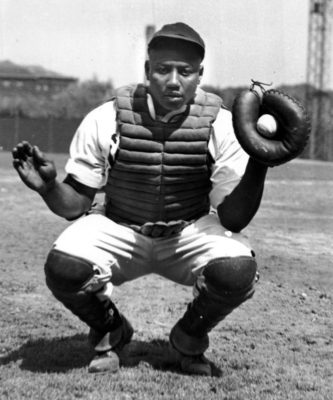
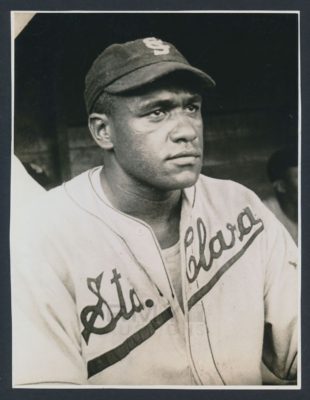
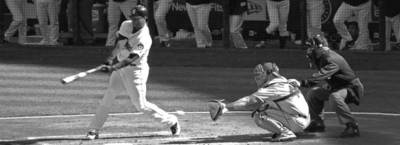
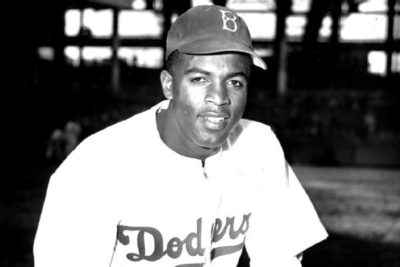
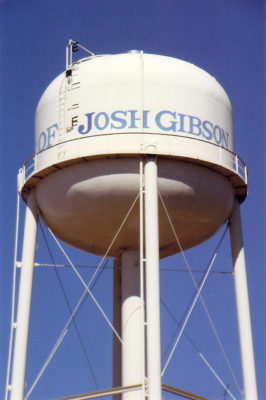
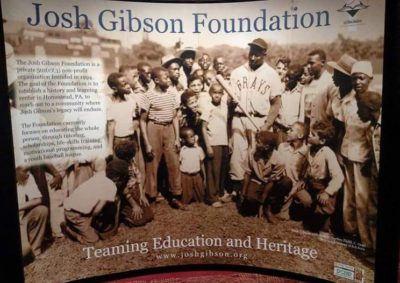

Great interview, Gary.
Most of us grew up only tangentially aware of the Negro Leagues. We knew about Jackie Robinson, of course, and became more aware when Satchell Paige was inducted, which opened the gates in 1972. Then, the book “Only the ball was White”, opened up our eyes even more.
But, it was “Bingo Kong’s Traveling All-Stars and Motor Kings” film in 1976 that put the history into popular culture. Based on the barn storming tours that the league was famous for, James Earl Jones played a character based on Gibson ( Billy Dee Williams played a character based on Satchel Paige).
Not to be too political, but the things we are viewing on our TV screens the last week goes to show that we still have a huge gulf to close in racial relationships in this country.
Sorry, Bingo Long. Damn spellcheck!
There was a HBO movie called “Soul of the Game”. It featured Mykelti Williamson, as Josh Gibson, Delroy Lindo, as Satchel Paige, and Blair Underwood as Jackie Robinson. It touched on the greatness of Josh Gibson, his hitting and fielding and also the inner demons that were also a part, his mental illness and his drinking. All in all it was a great movie and it will show you a side that you didn’t know about Josh Gibson.
Sean Green
Great article back in 2000 that expanded on the sad impact of these issues.
https://www.google.com/amp/s/vault.si.com/.amp/vault/2000/06/26/laughing-on-the-outside-the-greatest-slugger-never-to-play-in-the-major-leagues-josh-gibson-was-a-jovial-teammate-but-in-the-end-a-tragic-mystery-to-almost-all-who-knew-him
Love the Josh Gibson stuff, Gary.
I’ve always wanted to believe the old time great hitters would be just as great today. Same for negro league all stars. Certainly when Monte Irvin and Satchel Paige say he was the best, I believe it.
The color line in baseball was reprehensible and incomprehensible. At least we got a taste of Paige and Irvin. My best friend, a Dodger fanatic, saw Paige pitch against the Yankees in ’52 when Satchel was around 46 (maybe 50 or more!). He told me he struck out Billy Martin on the most amazing pitch he ever saw–he claimed the ball seemed to hover as it approached the plate and then suddenly dove into the strike zone! Martin stood motionless for about 10 seconds, not believing what he saw. Paige later said that was his “hesitation pitch.” (“Don’t look back, somethin’ might be gainin’ on ya”)
I saw Irvin hit a ball (opening day Polo grounds, 1955) off Dodger pitcher Jim Hughes that would have gone into the center field bleachers had it not been for one of the great catches of all time by Duke Snider.
I’m sure Josh Gibson would have left indelible major league memories also.
Best,
Bill
Now that Dr. Schaefer has once again managed to convert a totally unrelated topic and my own painful, pointless and pathetic existence into yet another unsolicited saga of Dodgers vs. Giants I hasten to add that the Brooks actually took that ’55 Opening Day tilt from Willie & The Boys,10-8 wasn’t it, on their way to ten in a row, a 13-and-one-half game cushion over the Bravos in wrapping up a season-long stroll to the N.L. flag, wire-to-wire I might add for just the right flavoring, but all this to say little or nothing of the world title his beloved Gints forgot to bring home to Coogan’s Bluff after shamelessly swiping the ‘fifty-1 flag from my bedraggled and bed-ridden Bums, thank you a lot.
By the bye and as the discerning reader will readily surmise, I am completely over last week’s scintillating account of a certain ’51 pennant race, courtesy of the one and thankfully only Dr. Schaefer. No seriously. I am quite. . .fine. Now.
My local therapist made a mint off me over the weekend, but hey! I am GOOD!
On a blessedly final and less ridiculous note, I couldn’t agree more with Bill’s thoughts about baseball’s longstanding and inexcusable color barrier. Jackie and Branch Rickey are exclusively to blame for making me the Dodger lifer that I remain today. One can only wonder what Major League careers guys such as Gibson, Paige and a youthful Irvin (or youthful Robinson for that matter) might have enjoyed otherwise. (Or more importantly, what ever possessed Dr. Schaefer to throw in with the Jints. Even my shrink couldn’t explain that.)
Thank you so much for another intriguing article.
From the funny farm club,
Michael
This guy Keedy is too much–you’re right the score was 10-8! And Irvin led off the inning. When Snider made the catch I slammed my scorecard into the seat. My hero robbed again!Then I realized that I had just seen one of the greatest catches of all time. No matter what baseball era you were part of, or what team you rooted for, had you seen Snider’s scintillating grab, it would have ranked in the top five of any catch you had ever seen. Maybe the top two. NOBODY was better in center field than Duke Snider.
And Monte Irvin hit in the toughest luck of any player in history. When he came back from a broken ankle in mid-August of ’52. he hit .310 for the final six weeks. It could have been .510!
It seemed like every ball he hit was a line drive, so often straight to to the glove of an opposing fielder.
Damn shame he didn’t get to play at 20, instead of breaking into the majors at 30.
Sir;
I have tried several times to add or correct information while browsing your frequently excellent photographs that accompany your articles. However, every time I do I get this result: “Sorry, but there was an error posting your comment. Please try again later.”
I use my real email address and my real name. I don’t have a website, so I type “None.” But rejection is the result. Any suggestions?
Those of us on the Funny Farm are ardent fans. We remember vividly. So, here’s a description of Snider’s catch in 1955:
My dad and I had a great vantage point in the upper deck of the Polo Grounds just to the left of home plate. Brooklyn pitcher Jim Hughes went 3-2 on Monte Irvin. Irvin was like a panther at the plate, slight crouch and ready to pounce. Very powerful, muscular build. Hughes grooved a fast ball and Monte pounced. At first, it looked like a line drive just to the right of Pee Wee Reese at shortstop. We thought base hit, sure, but then we saw Snider racing, back to the plate at full speed–at the same instant the ball started to rise, as Duke sped to deepest center field. We exclaimed in unison, “the ball is going to go into the bleachers!” Snider hit the 10 foot cinder track, leaped high in the air like a gazelle, twisted and fell in a heap at the base of the short center field fence, with white flashing out of the webbing of his glove! I died.
His jump on the ball was instantaneous and unerring. And Snider ran like a cheetah. He must have jumped three feet in the air to make the play. The timing had to be perfect, let alone being able to hold onto the baseball.
The 483 foot sign was at the clubhouse, recessed between the two bleacher sections. The distance to the beginning of the cinder track was about 60 feet. So, at the point of the catch, the ball had traveled about 425 feet but still had the legs to get over the small fence about 433 feet from home plate.
The Mays’ catch on Vic Wertz was about the same distance but in that instance the ball was coming straight down. Willie’s famous catch was terrific. Snider’s catch was other worldly.